C
H
A
P
T
E
R
4
MUSIC
&
OPERA
After silence, that which comes nearest to
expressing the inexpressible is music. - Aldous
Huxley

Click the video to listen to Dinah
Washington's This Bitter Earth over Max Richter's On
the Nature of Daylight. Richter is a German-born
British composer who influenced post-minimalist
music. His prolific compositions include:
stage, opera, ballet, cinema.
Richter composed The Blue Notebooks,
his second album, as a protest to the 2003
invasion of Iraq - a mediation on violence. It was
used in the film The Arrival - and many others.
The album features readings from
Franz Kafka's The Blue Octavo Notebooks and Czesław
Miłosz's Hymn of the Pearl and Unattainable Earth.
Both readings are by the British actress Tilda
Swinton.
|
Periods and Eras of Music
Medieval 500–1400
Renaissance 1400–1600
Baroque 1600–1760
Classical 1730–1820
Romantic 1780–1910
Impressionist 1875–1925
Modern 1890–1975
20th Century 1900–2000
Contemporary or Postmodern 1975–present
21st Century 2000–present
Charles Joseph "Buddy" Bolden (1877 – 1931) was an
African-American cornetist, and is regarded by
contemporaries as a key figure in the development of
a New Orleans style of rag-time music which later
came to be known as jazz.
Rock Late
1940s to Present
Jazz Fusion
late 1960s - Present
Electronic
Music 1960s
|
|
.
Forms of Music
The Baroque
Era
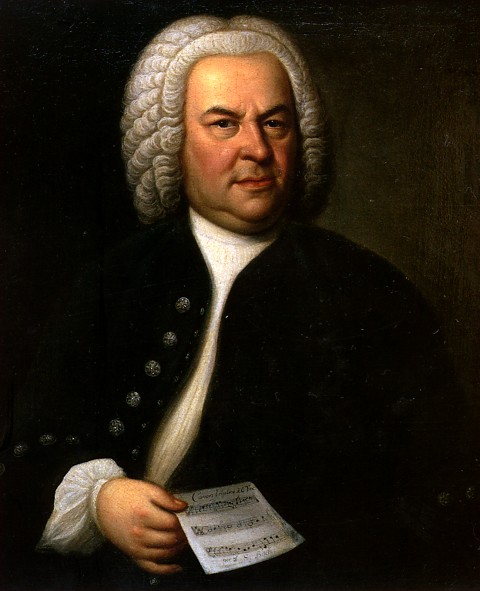
|
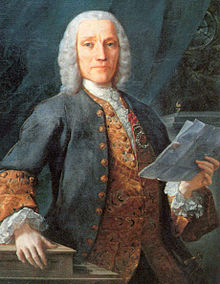 |
|
Giuseppe Domenico Scarlatti
(1685–1757) Italian Baroque / Classical
composer. He wrote 555 keyboard sonatas.
Click the picture to listen.
|
|
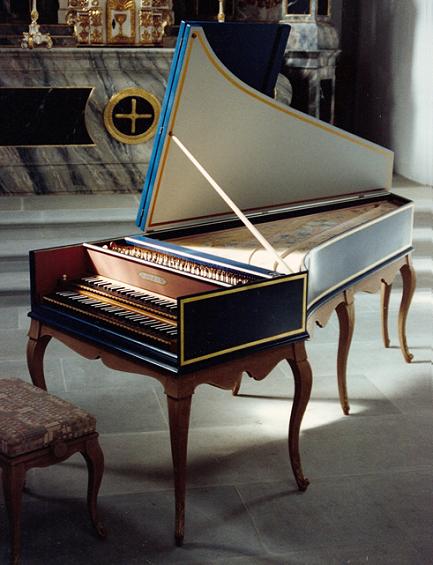 |
|
Harpisichord
Harpsichords produce sound by plucking a
string when a key is pressed. It was widely
used in Renaissance and Baroque era, and
fell out of favor when the piano was
invented. Click the picture to listen.
|
|
|

Harpsichord Action |
|
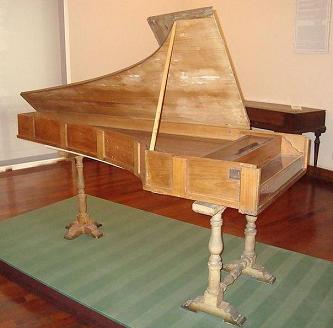 |
|
Bartolomeo
Cristofori di Francesco
Italian (1655-1731)
He was the inventor of
the piano. The instrument was originally
called the pianoforte - or loud soft
instrument. Listen: Cristofori Piano:
Sonata K.9 by Domenico Scarlatti
Visit the
Steinway Factory
|
|
|
 |
|
Classical Music
to Romantic
|
|
 |
|
Wolfgang Amadeus Mozart
(1756 – 1791)
Mozart
was a prolific German composer of Classical
music - having composed over 600 works. He
started composing, and performing for
royalty, when he was just five years old.
Amadeus |
|
 |
|
Leopold Mozart (1719 – 1787)
He was
a composer, conductor, violinist. father and
teacher of Wolfgang Amadeus Mozart. His
book, Versuch einer gründlichen Violinschule,
os still used to teach violin today.
The
Mozart family on tour: Leopold, Wolfgang,
and sister Marianne. Watercolor by
Carmontelle, ca. 1763 |
|
|


|
From
the movie
Immortal Beloved.
Ludwig
van Beethoven (1770 – 1827) was a German
composer and pianist. Beethoven was deaf
when he composed his 9th symphony. His
music marks the transition from Classical
music to the Romantic era - making him one
of the most influential composers of all
time. Romantic music puts an emphasis on emotions over
reason. For the philosopher Plato, reason is
your greatest faculty, so reason should
always decide when to be emotional, and what
desires you should pursue. A virtuous person
is rational. Her desires and emotions are
based on rational decisions. Virtue is a
balanced temperament. This concept greatly
influenced music up until the time of
Beethoven. After Beethoven music becomes
more emotional.
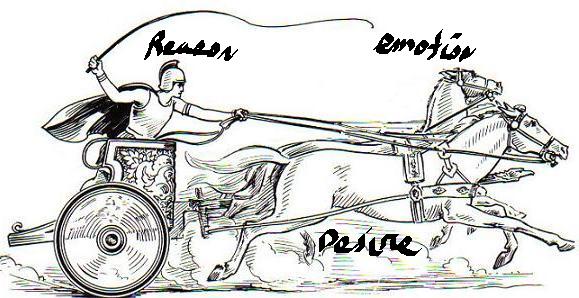


Pick the Virtuous Person
Collaborate:
What
picture is a virtuous person for Plato. The
color in the center represents what
personality traits are mixed together.
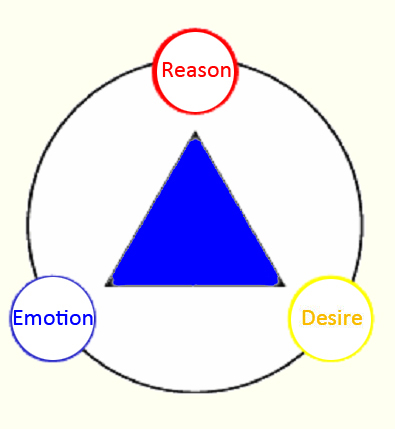
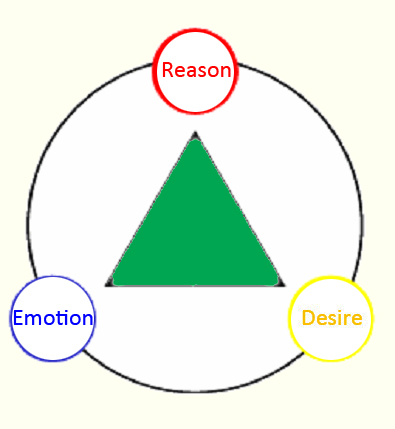

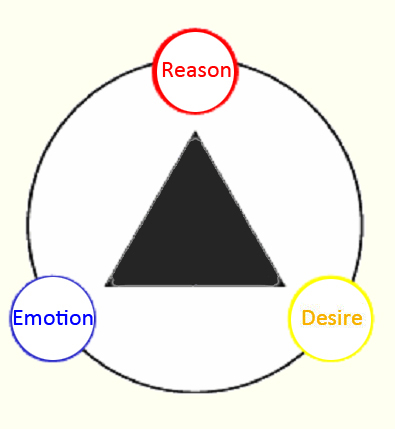
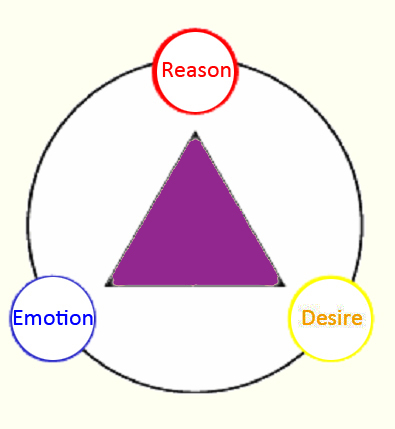
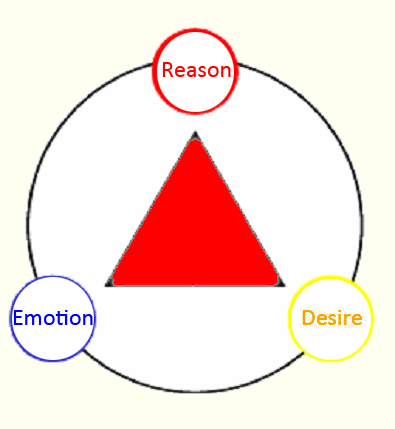
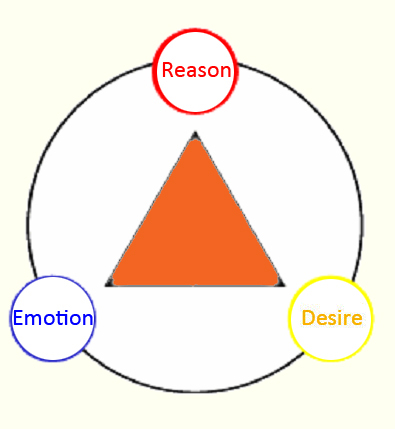
Take a master
class with James Conlon:
James Conlon on Music, Plato, and
Aristotle (1)
James Conlon on
Tradition and Innovation (6)
|
|
|
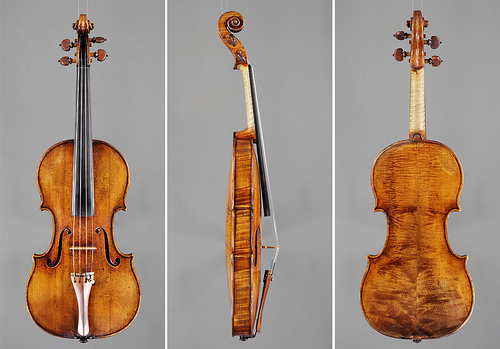
1726 Stradivari played by Niccolň Paganini
|
|
 |
|
Niccolň
Paganini
Italian (1782-1840)
Niccolň Paganini was a
violinist, violist, guitarist, and composer.
He is one of the greatest violinist of all
times. Click the picture, and listen to his
Caprice No. 24 in A minor, Op. 1.
|
|
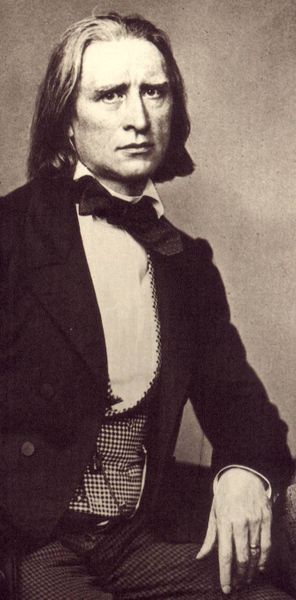 |
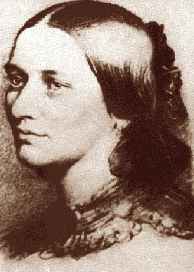
Clara Wieck -
Schuman
|
|
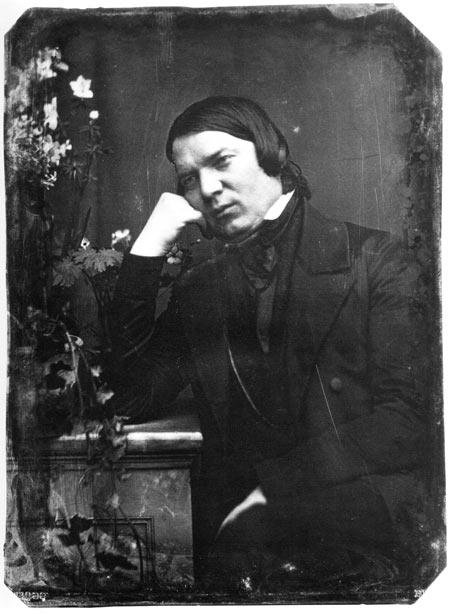 |
|
Robert
Schumann
German
(1810-1856)
Schumann
was a pianist, music critic, composer,
and lawyer. He is one of the greatest
composers of the Romantic era.
He started as a concert pianist, and was
disturbed by his inability to play a piece
by Franz Liszt. His hands didn't have the
reach, so he constructed a device to stretch
his hands. This resulted in an injury that
left him crippled. He turned to composition,
and his wife Clara assisted him in
performing his music. She was one
of the greatest pianists of the time.
|
|
|
|
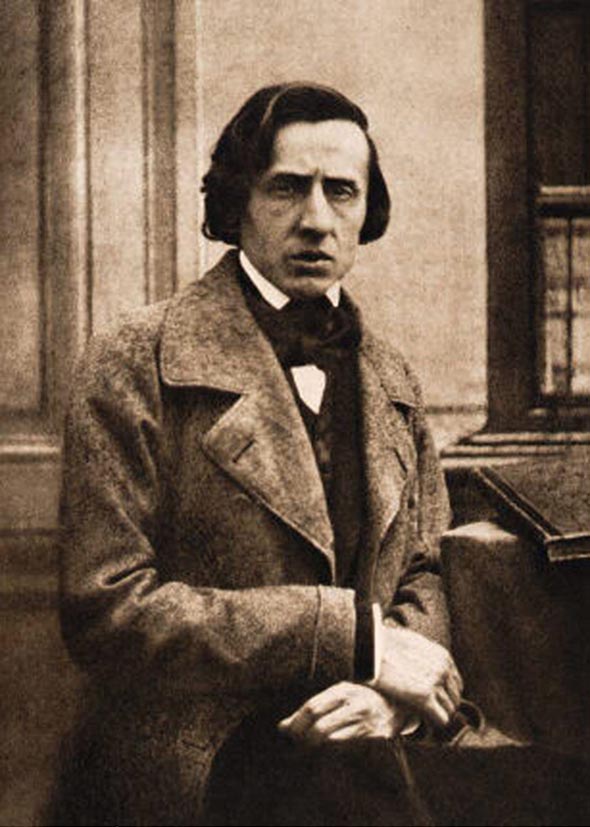 |
|
Sergei Rachmaninoff
Riussian 1873-1943
Rachmaninoff was a
Russian pianist, composer, and conductor of the
late-Romantic period. Born into a musical family, he
took up the piano at age four.
As a result of the critical reaction to his Symphony
No. 1, he fell into a four-year depression. In 1942,
he moved to Beverly Hills, California, and acquired
U.S. citizenship a month before his death from
melanoma. Listen:
Vocalise |
 |
|
Impressionism
Impressionism in
music focuses on suggestion and atmosphere -
"conveying the moods and emotions aroused by the
subject.
|
|
 |
|
Maurice Ravel
French (1875-1937)
Ravel was a French pianist
and composer. He and Debussy invented
impressionist music at the same time. Click the picture to
listen.
|
|
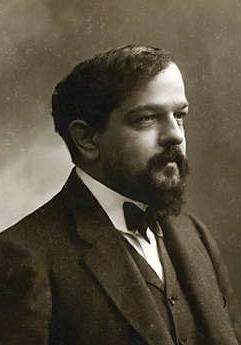 |
|
Claude Debussy
French (1862-1918)
Debussy was a pianist and
composer. He, and Maurice Ravel, created
impressionist music. Click the picture to
listen.
|
|
|
Ragtime
|
|
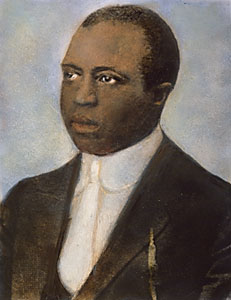 |
|
Scott
Joplin
American
(1867–1917)
Scott
Joplin was the inventor of ragtime music.
His mother was a piano teacher. She taught
Scott Mozart, and at times you can hear the
influence. Pianos in Mozart's time sounded like ragtime
pianos - a sound they achieved by painting
the strings with varnish.
Steven Lubin:
Mozart, Variations in C, K.265 (300e),
"Ah, vous dirai-je maman"
Adam Fulara -
Mapple Leaf Rag
- By Scott Joplin |
|
|
NOTES
|
|
ELECTRONIC MUSIC
|
|
Music Concrete |
 |
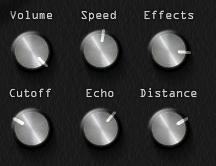 |
 |
|
Musique Concrčte
(French for real music) began in the late 1940s with Pierre
Schaeffer. This is the beginning of electronic music. It uses
manipulated tape recordings: slowing down, speeding up,
reversing, splicing, and manipulating the tape.
Delia Derbyshire |
Dr Who Theme
|
Documentary
Click the
modules above to try
it.
A
lot of recording artists don't see their DAW
(digital audio workstation) as a musical instrument
- like
Pierre Schaeffer did.
That's not a creative way to look at it, and that's
what attracts me to electronic music; it's just so
creative - and forward looking.
With the invention of the synthesizer by Don Buchla
and Bob Moog electronic music studios became
affordable, and I love the story of the Buchla 100
synthesizer; where Don went into the studio hoping
they would let him use it, and Morton Subotnick
thought he was there to apply for the job creating a
new instrument - on a $500 grant, so I love the
music, instruments, and even the history.
We
now have classical music performed on synthesizers,
and that's even considered to be electronic music -
like Switched on Bach by Wendy Carlos. That's very
different from Jean-Michel Jarre's Oxygen - or
Morton Subotnick's Silver Apples Of The Moon. These
are the types of compositions I think of when
someone says electronic music.
When Giorgio Moroder used his Roland System 700
modular synthesizer to create that driving punchy
sequence on
Donna Summer's I Feel Love, dance music
became electronic music. For a lot of people this is
all they mean by electronic music. This is like
considering ELP (Emerson Lake and Palmer) electronic
music - and not progressive rock. Why then consider
Switched on Bach electronic music? Can't there be a
fusion of electronic and dance, progressive rock,
and classical? To know the answer, we need to know
what the definition of electronic music is.
Here is Aristotle's explanation of how to create an
essential definition. He gives Man is the rational
animal as an example. The thing being defined goes
first - Man or Human. Next we place the is of
identity. The type of thing we are is next -
proceeded by what separates us from other things of
that type; we are animals, and we are the only
animals that reason, so he thought. This definition
has a problem because we now know that other animals
do reason - just not as well since they don't have
language. Really language separates us from other
animals. maybe he should have said Man is the
linguistic animal. You could point out that some
birds talk, and animals do seem to communicate, but
they don't have a language with rules.
What is electronic music. The thing we are defining
goes first followed by the is of identity;
electronic music is ... . What type of music is it?
Music made with electronic instruments or devices.
What separates it from other music made with
electronic instruments? It's experimental, so
electronic music is experimental music made with
electronic instruments.
If
we were to accept this definition, we couldn't
consider "I Feel Love" as electronic music because
Moroder's use of the synthesizer wasn't experimental
- it's pop dance. A lot of dance music is like that.
For that reason it doesn't really strike me as
electronic.
|
|
S Y N T H E S I Z E R S |
The First Electronic
Keyboard Instrument
The Musical
Telegraph by Elisha Gray

Elisha Gray Also invented the telephone, and got the
patent in first is debatable. The story is that
Bell's lawyer hand-delivered the finished
application to the patent office just before noon -
a few hours after Gray's patent arrived, but Bell's
lawyer requested that Bell's application be
immediately recorded, and it was hand-delivered to
the examiner that same day - on a Monday. This
allowed Bell to argue that it arrived first.
|
|
The West Coast Approach

Buchla 100 series Modular Electronic Music System
In the early 1960s Morton Subotnick, from the San
Francisco Tape Music Center, commissioned Don Buchla,
from Berkeley California, to create an electronic
music instrument. Electronic music studios used
various electronic equipment to create music. They
had oscillators to create the sound waves. High pass
filters filters out the low frequencies, and low
pass filters filtered out the high frequencies. High
pass and low pass filters are used in radios; these
are the treble and bass knows. They used amplifiers
amplified the sound; this is the volume know in your
radio. All this equipment were in separate boxes. Subotnick
wanted all this in one compact box - to create a
music instrument.
Morton Subotnick wanted something completely
unique, so he insisted on not using piano style
keyboard; he didn't want an instrument that
would be used to create traditional western music.
The result was the Buchla 100 series synthesizer above.
One of the modules was painted red. it was dipped in
LSD. You liked it fro inspiration.
Click here to learn more.

The Buchla synthesizer was modular, and it still is to
this day. You can see the different modules above:
filters, amplifiers, and oscillators. Since they didn't want a
keyboard, the sequencer was created to step through
notes. The sequencer, with its touch plates, are at
the bottom of the synthesizer. Dials are used to
select different pitches.
With this instrument Morton Subotnick recorded
Silver Apples Of The Moon.
Below is a picture of the Buchla 200 series
synthesizer.

The Buchla 200e

What is the West Coast synthesizer philosophy that
was established by Subotnick and Buchla? Their
approach is to create modular synthesizers that
don't have a piano style keyboard, or any other
traditional control device, and are used to create
experimental music. In other words the West Coast
philosophy is anti Western music.
Although modular synthesizer were on the endangered
species list, they are stronger than ever today.
The eurorack
modular synthesizer is the most popular. The modules
are smaller. The sizes and voltages
are standardized, so companies can specialize in one
of a kind modules. These synthesizers, like their
predecessors, are monophonic; you can only play one
note at a time; they use patch cables, and you can't
save your settings. As soon as you create a new
path, the old one is lost.

Eurorack Modular Synthesizer
|
|
The East Coast Approach

Keith Emerson - Lucky Man Moog Solo
Suzanne Ciani | System 55
Moog Modular Documentary
In 1964 Robert Moog created the west coast approach
to synthesizers. He standardized what a synthesizer
should be for creating western music. Wendy Carlos' 1968 Switched-On Bach
brought widespread interest to the synthesizer.
Shortly after, Keith Emerson, Jan Hammer, Klaus
Schulze, Tangerine Dream, The Beatles, The Monkeys,
and The Rolling Stones also became owners of Moog
synthesizers.
The Moog modular synthesizer is considered by
enthusiasts to be the definitive
synthesizer. Although modern synthesizers are more user friendly than,
and available at a fraction of
the price, modular synthesizers continue to be
valued by collectors and musicians.
|
|

This new popularity led to the 1970 release of the
classic Minimoog D - modeled after the large modular
systems, and designed for portability, usability,
and affordability.
The
Minimoog
is an analog monophonic (you can only play one note at a
time)synthesizer. It was invented by Bill Hemsath and
Robert Moog in 1971. Hemsath wanted a synthesizer he could take home with him.
During his lunch breaks he assembled modules he
scavenged from a parts room. The size of the
keyboard came from a keyboard they were using to for
spare keys. He cut off the top area, and wired it
up. Moog has been producing the Minimoog Voyager,
and is not building the old D version.
The Minimoog D was actually the second portable synthesizer after the EMS below. It is often referred to as the Stradivarius or analog synthesizers
because it's sound is unique, fat, warm, organic, and haunting.
|
|

EMS VCS 3

EMS Synthi AKS
|
|

ARP 2600
Jean-Luc Ponty -
Mirage
Allan Zavod - Keyboards
Jean Michel Jarre -
Oxygene
Tangerine Dream
|
|

The
Oberheim
SEM_(Synthesizer_Expander_Module) was a small complete monophonic
synthesizer; it could only play one note at a time. It was combined here
to create one of the first commercially available polyphonic
synthesizers. You can see 4 SEMs above, so this synthesizer could play 4
motes at a time. Each SEM had to be tuned separately.
|
|

The Prophet-5 is an analog synthesizer made by
Sequential Circuits - between 1978 and 1984. It's founder, Dave Smith, produced
the first synthesizer to have MIDI. It could save settings, communicate with any
MIDI device, and was polyphonic - 5 notes can be played at the same time. MIDI
was perhaps the greatest example of geek ethics ever since it was given free to
the world. If it was sold, Dave Smith would have been a billionaire. As it's in
things like: cameras, phones, computers, and of course synthesizers.
|
 Click
Image to Listen Click
Image to ListenThe Fairlight CMI
(Computer Music Instrument) was released in (1979). It was the first
commercially available polyphonic digital sampling instrument. You could record
other instruments and sounds, and play them back.
|
|

The Yamaha DX7 is an FM Digital Synthesizer
manufactured from 1983 to 1986. It was the first commercially successful digital
synthesizer, and one of the best-selling synthesizers of all time; over
200,000 were made.
It was polyphonic - with 16-note polyphony.
The sounds were generated using FM synthesis. It used sine waves only to create
sound. We will see later what this means. It changed how
synthesizers were made - with its menus and buttons, but is very difficult to
understand and program.
|
Where are we today.
Software Synthesizers
Virtual
Instruments
Z3ΤA+ &
Bizune
A virtual instrument, also known as a softsynth, software synthesizer, VST, VSTI,
or plugin is a computer program for digital audio generation. Plugins are
software that can only be opened, and used, in your DAW. DAW stands for digital
Audio Workstation; it's your recording studio software. Some softsynths can be
used by themselves; this is called standalone.
Using
computer to create sounds and music is not new, but advances in processing speed
are allowing software synthesizers to accomplish the same tasks as dedicated
hardware synthesizers. Softsynths are cheaper, more portable, creative,
convenient, offer more options, and are easier to interface with other music
software such as recording studios. To run this software you need a computer
with a quad processor. It's important to note that there are an abundant of free
softsynths.
Most
musicians believe that software synthesizers don't sound as good as physical
synthesizers. You be the judge. Here is a comparison of the Oberheim SEM and
Arturia's SEM V.
Click here
to listen.

Native
Instruments' Monark is a recreation of the Minimoog D. It even gives you control
over oscillator drift and leakage. This caused the instrument to go out of tune,
but gave it its organic sound. Moog fixed this problem with the Voyager, but in
doing so, took some of the unique character from the instrument. Jean Michel
Jarre said that Monark is better than anything Moog was making at the time. He
likes it because of what he calls its ability to create random artifacts.
Unfortunately Native Instruments decided to make the software monophonic, and it
has no modular capabilities.
Best
Software Synthesizers
As we
said above, Monark is currently the best sounding software synthesizer to date.
Native
Instruments' Komplete:
Komplete has everything you need - except the DAW. DAW stands for digital audio
workstation; it's your recording studio software. Komplete has some of the best
synthesizers ever made. Here is a list:
Massive
is one of the best lead synthesizers. It's semi modular, and requires no patch
chords. Below is a picture of patch chords.

It has the best GUI
(Graphical User Interface). Click to open the picture below.

It uses wavetable
technology. This means that it provides a large list of sound waves that you can
select - instead of the standard sine, square, pulse, saw, and triangle. Click
the picture below.

Click to listen to
Massive.
Komplete also comes with some of the best experimental synthesizers - Absynth
and Reaktor.
Absynth
- Click the picture below.

Absynth
looks like Star Trek Borg technology. It has every way to synthesize sound, so
it's difficult to master, but you can get started right away simply by clicking
the mutate button. This creates random patches - what we call happy accidents.
The results are amazing. It should be noted that Massive also has a mutate
button. Listen to NI
Absynth
Reaktor
is not a synthesizer. You use it to create software synthesizers. There are
hundreds of very creative instruments that people have made on the Native
Instruments site, and they are free, but you need to buy Reaktor to use them.
Kontakt
is one of the best sampling instruments. It also comes with Komplete. Many
companies are sell samples for Kontakt.
FM8 is
a great FM synthesizer - like the Yahamah DX7.
):(
Spectrasonic's Trilian is the best
plugin for bass.

Spectrasonics Omnisphere is the best plugin for pads.

Best Software Pianio - Synthogy Ivory 2
Virtual
Piano
Arturia's V Collection

The
great analog synthesizers of the past have been converted into powerful software
- virtual music instruments. They have the same flexibility, sound, and controls
as the original synthesizers. Learn more at:
www.arturia.com
(Arturia)
Kaj Roger Willumsen - Arturia Moog Modular
V 2 Demo song
Arturia Moog Modular V
Rob Papen's Predator sounds great, and it comes with thousands of great sounds,
so you can start making music immediately. For these reasons, it is a staple,
and favorite, of many musicians.
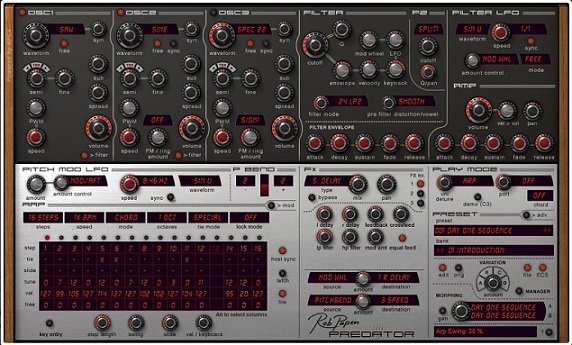
U-he Zebra is one of the best modular
synthesizers. It was used by Hans Zimmer in Dark Knight Rises. The Dark Zebra
is a zersion of this instrument that includes patches by Zimmer.
The instrument starts blank - with no modules. Modules are stacked in the right
and left - as many as you want, so you only see what is being used. For this
reason, and its sound, it is a favorite of many musicians.

Apps
Jordan
Rudess Greensleeves Performed on GeoShred (an iPad instrument by Wizdom
Music).
GeoShred
Overview
Sampletank
App This library can also be purchased for the Morg iM1 app.
Animoog
Geo
Synthesizer
Morphwiz
on the Lenovo A720 with Windows 8
MIDI Controllers
A midi controller controls
your VST software or hardware synthesizer, but they don't make sounds of their
own. Some controllers, like the Seaboard, do come with there own software. The
Roli Seaboard gives you the most control of any keyboard controller ever built.
The 49 key cost $1,200.00.

Marco Parisi plays Jimi Hendrix's "Little Wing" on the Seaboard
RISE
Keytar
The Keytar also allows musicians to play keyboards like a guitar.
Click to listen to Keytarjeff.
Regular Synthesizer Keyboards
The Arturia Keylab 61 is a
best buy at just $300.00. It's very expressive, a solid construction, and comes
with the Analog Lab software. It's all you really need to get started.

Keyboardless MIDI Controllers

The Novation Launchpad has a
grid of illuminated buttons that can trigger sounds, loops, effects, and other
parameters. It's used with the Ableton Live software. The controller is only
$150.00, but you also need the software. Launchpad was one of the first
grid-based performance controllers. These controllers are are growing in
popularity with electronic music. Click the above picture to listen.
RAT -
Recording Arts and Technology
As you know, recording studios originally used reel-to-reel tape decks to
record and mix music.
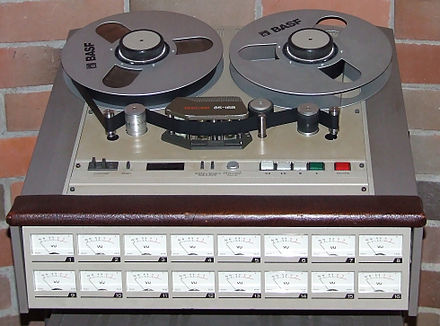
The
TASCAM 85 16B tape recorder can record 16 tracks of audio, and used tape that
was 1-inch wide. Reel-to-reels had up to 24 tracks on 2-inch tape. Some used the
larger tape with fewer tracks for better fidelity.
DAW -
Digital Audio Workstation
Modern
recording studios use software to record music. Using computers to record music
was invented by Avid Technology. Their software, called Pro Tools, is used by
professional recording studios, and home studios. Like software synthesizers, it
is far more powerful, creative, practical, and inexpensive. Your teacher uses
Pro Tools in his recording studio. Of course you would need a new, and very
fast, computer.
Best Daw
Avid's Pro Tools is the most
popular in the USA:

Steinberg's Cubase is the most
popular outside the USA:

Read More
|
REGGAE
Let Me Down Easy - Paolo Nutini
AMBIENT
Ambient music came out of the
experimental music and the art of the 70s. Brian Eno, and
Klaus
Schulze, are among the main founders. Eno's
Music for Airports is an
example of how the music creates a continuous mood - unlike
pop music that is usually a few minutes long. It's
unobtrusive - allowing background sounds to merge with the
music, has no traditional composition, is more natural,
open, experimental, typically electronic, emphasizes
timbre (the unique quality of an instrument's sound), and atmosphere.
FLAMENCO

The Bulerías is a 12-beat cycle. It's most often played with
accents on the 3rd, 7th, 8th, 10th and 12th beats. The
accompanying palmas are played in groups of 6 beats, giving
rise to a multitude of counter-rhythms and percussive
voices. Listen to this
Flamenco Bulerías video. Here the emphasis is: 1 2
[3] 4 5 [6] 7 [8] 9 [10] 11
[12]- also the rhythm for the song
America in West Side Story
Gipsy
Kings -
Viento Del Arena |
Un Amor | Sin
Ella - Fuego
Buena Vista Social Club Chan Chan
Santana - Soul Sacrifice 1969 "Woodstock" Live |
Maria Maria |
Paco de Lucia -
Entre dos aguas
Jason McGuire -
El Rubio
Barcelona
FUSION JAZZ
Jean-Luc
Ponty -
Mirage
|
Cosmic Messenger
Jean-Luc Ponty violin, Allan Zavod keyboards, Jamie
Glaser guitar, Rayford Griffin drums, Keith Jones on bass
African
Fusion
Fatoumata Diawara - Bissa
Fatoumata Diawara - Kanou
Improvisation with Richard Bona & Bobby McFerrin
Richard Bona - Dina Lam
Klezmer
Punk Jazz Fusion
Milla Jovovic Two Yiddish Songs from Dummy
Dummy is a
2002 American comedy-drama film written and
directed by Greg Pritikin. It stars Adrien
Brody, Milla Jovovich, Illeana Douglas, Vera
Farmiga, and Jared Harris.
FREE JAZZ
Miles Daves
Bitches Brew
| Miles Davis & John Coltrane -
So What
Ben Neill - Afterimage
Eldar
Esbjorn Svensson Trio
Gonzalo Rubalcaba Trio
PROGRESSIVE ROCK
Yes
Genesis -
Selling England by the Pound
Dream Theater -
Octavarium
Jordan Rudess is playing the Haken Continuum
keyboard.
LOOPING:
Types of Music
Aria
An Aria is a long vocal solo for an opera or an
oratorio.
Purcell - Cold Song
Nanette Scriba
):(
What power art
thou?
Who from below
Hast made me rise?
Unwillingly and slow
From beds of everlasting snow!
See'st thou not how stiff
And wondrous old?
Far unfit to bear the bitter cold...
I can scarcely move
Or draw my breath
I can scarcely move
Or draw my breath
Let me, let me
Let me, let me
Freeze again...
Let me, let me
Freeze again to death!
Castrato
Castrato
is a male singer with an
unusually high voice. The high
register was produced by
castration before the age of
puberty. Some castrati are the
natural result of not
reaching sexual maturity.
The Cold Song by Henry
Purcell, performed by:
Klaus Nomi
by
John Dryden, King Arthur Rock
Opera
VITAS -
Ave Maria
|
Lucia Di Lammermoorr (il dolce suono)
Farinelli Il Castrato
A CAPELLA
A cappella
is unaccompanied vocal music. It can be sung solo, or
it can be sung in a group.
Is this a capella? Pentatonix -
Somebody That I Used To Know
Pentatonix ft Jason Derulo -
If I Ever Fall in Love
Leann Rimes -
Amazing Grace
Rebekah Del Rio -
Llorando "Crying"
MASS
A choral (Vocal) work with 6
parts. Each part relates to a section of a church mass: I
Kyrie, II Gloria, III Credo, IV Sanctus, V Benedictus, and
VI Agnus Dei.
Mozart's Great Mass in C Minor- Kyrie
Antonio Vivaldi
- Gloria Rv 589 "Et in terra pax"
CANTATA
A
Cantata is baroque music. It's usually a choral
work - with one or more soloists
and instrumental ensemble. It has
several movements, and served as a mass.
Halo
3: Cantata #147 by J. S. Bach
ORATORIO
Large baroque work with
chorus, symphony, and vocal soloists.
John Debney - The Passion Of the
Christ Oratorio
Rhapsody
A
rhapsody is similar to variations, but is more
free-flowing, has a wide range of emotions,
sounds spontaneous, and has a sense of
improvisation.
Franz Liszt's Spanish Rhapsody
Cuban Rhapsody
Tocatta
The toccata emphasizes the dexterity of a virtuoso
performer. It's fast and lightly fingered.
Toccata & Fugue in d minor
by Johann Sebastian Bach
Fugue
A
fugue starts
with a single melody - the main theme. Then the theme is
woven throughout different overlapping melodic lines; this
is called polyphony and counterpoint - a type of texture.
Polyphonic also refers to instruments that can
play more than one note at a time. Monophonic refers to
instruments that can only play one note at a time. The Minimoog and ARP 2600 were both monophonic analog
electronic instruments - see above. Monophony also refers to a
single melody without accompaniment. This is also a type of
texture. See elements of music.
Homophonic texture occurs when chords (harmony) accompany a
single melody.
J. S. Bach's The Art of Fugue - Glenn
Gould
Bach Fugue BWV 891
- Glenn Gould
Sonata
The sonata form has three sections. The exposition is where themes
and ideas are introduced. The development section develops these
ideas, and the recapitulation restates the exposition, and
minor changes are made.
Horowitz - Scarlatti Sonata L33
Ludwig Van Beethoven
- Moonlight Sonata - André Watts
Symphony
A 30-minute orchestral work. Opening movement is in the
sonata form. See Sonata above.
Toscanini - Beethoven Symphony No. 9
Igor Stravinsky -
The Rite of Spring
The Rite of Spring (1912) is
a ballet with music by the Russian composer Igor Stravinsky.
It's about a pagan ritual where a girl dances herself to death.
The music is one of the most innovative and influential in
history because it was the first to use dissonance.
Leonard Bernstein said, “... it’s never been topped for
sophisticated handling of primitive rhythms…”, and “… it’s
also got the best dissonances anyone ever thought up." For
these reasons it caused a riot at
its 1913 Paris premier.
Concerto
A concerto features an instrument soloist - with an orchestra. There
are three movements: fast,
slow, and fast. It lasts for about 30 minutes.
Elgar Cello Concerto - Yo-Yo Ma
Etude
An
etude is a musical composition of
technical difficulty. The purpose of an etude is to perfect
some technical skill at the instrument.
Nobuyuki Tsujii plays Chopin
Etudes
Xingye Li plays Etude No. 1 by Heitor Villa Lobos
Andre Watts plays Chopin Etude op.25
no.1 & "Revolutionary" Etude
Andrei Gavrilov plays Chopin Etude B
minor, op 25 No 10.
Valentina Lisitsa plays Rachmaninoff
Etude Op. 39 No. 6
(Little Red Riding Hood)
Nocturne
A
nocturne is music that is to be played at night, or the
music is reminiscent of nighttime.
Yundi Li -
Chopin Nocturnes
Martina Filjak plays Scriabin Nocturne
for left hand, Op 9 No2
ELEMENTS
OF MUSIC
PITCH
Pitch,
or tone, is measured in
vibrations per second. Low pitches are slow frequencies, and
they require larger instruments. Watch
Blue Man Group; as they
make their instrument bigger, notice how the pitch gets
lower. When the size of the Drumdrone is smaller, the pitch
gets higher. Why do you think men have lower pitched voices
than women?
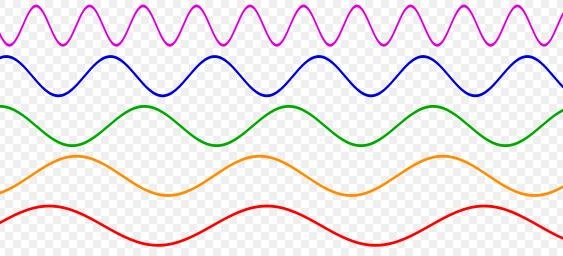
The
bottom pitch is the lowest, and the top is the highest.
SYNESTHESIA
Synesthesia
is a neurological medical
condition where our sense perceptions get
crossed. The
stimulation of one sense
perception leads to an
involuntary experience in a
second sense perception. People
who have synesthesia might see
sounds, letters, and numbers as
having specific colors. Even
days of the week can be
associated with color as in
Mondays are blue. The composer Scriabin
claimed to see certain colors with certain
pitches.

Scriabin's Keyboard
If he played a C on the keyboard, he would
experience the color red, and D would produce
yellow.
Some people claim that letters and numbers
trigger different colors.
SYNESTHESIA
0
1
2
3
4
5
6
7
8
9
It could be said that we all
are a little synesthetic. For
example, is blue a warm color or
a cold color? If you said cold,
it's because you associate it
with water. Is red a warm or
cold color? If you said warn,
that is probably due to the
association of the fire, but a
stranger example is the
association of the color blue
with depression. We even say,
'I'm feeling blue today.'
DYNAMICS & VOLUME
The size of sound waves determine the volume. By volume we
mean how loud it is. As you turn
the volume up on a radio, the
sound waves bigger, and the
music gets louder.
TIMBRE /
COLOR
|
Timbre
(pronounced tamber) is what
distinguishes one sound from another. You know your
friend's voice because it has a distinct timbre.
Each instrument has its own distinct sound.
Each type of wave form has
a unique timbre.
The picture below shows what the different sound
waves look like. They are: sine, square, triangle,
and saw-tooth.
Each has a unique timbre. By mixing them together,
synthesizers can create complex warm sounding
timbres.
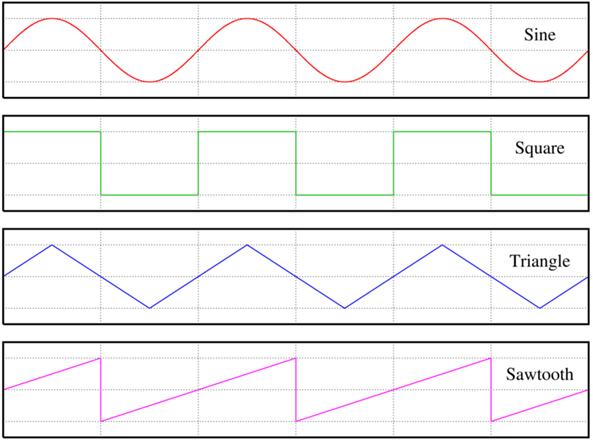
Sine Wave
Click the above link to listen.
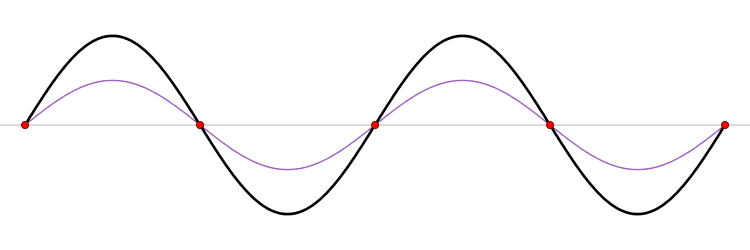
Square Wave
This sample is very is loud, so turn your volume
down first, then click the above link to listen.
The picture
below shows you how square waves are made from sine
waves.

Triangle Wave
Click the above link to listen.
The picture
below shows you how triangle waves are made from
sine waves. The animation is a little slow, so be
patient.
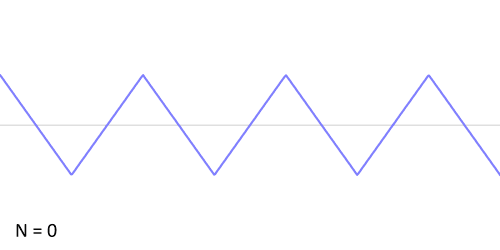
Sawtooth Wave
This sample is also loud, so turn your volume down
first, then click the above link to listen.
The picture
below shows you how sawtooth waves are made from
sine waves.

All sound is made with sine waves.
What is a Fourier Series?
www.youtube.com/watch?v=ds0cmAV-Yek
|
|
Listen
to the different sounds made by the different instruments:
Shape of My Heart
by Sting and Dominic Miller
Shape of My Heart
- rendition by
Mihály Simkó-Várnagy
See also
Boss Loop Contest 2011
Listen to these performances of Dominic Miller and Pat
Metheny -
Shape of My Heart.
Each guitar has a different timbre.
Listen to these performances
of Goodbye Pork Pie Hat by Chares Mingus. Each solo
instrument has a different timbre - or sound quality.
Jeff
Beck -
Goodbye Pork Pie Hat
Dave Holland -
Good By Porkpie Hat
|
RHYTHM
a. BEAT
-
b. METER
– Cluster of beats with
accents.
-
Double Meter
– 2 beats to measure:
12 12
12
-
Triple Meter
– 3 beats to measure:
123 123
- Quadruple Meter
- 4 beats to measure: 1234 1234
- Syncopation
–
Accent on unusual beats.
c. TEMPO
- Speed.
♪
= 60 means 60 quarter notes per minute. You would tap
your foot every second. The tempo of this
Mozart Sonata is
♪
= 120. How many times per second would you tap your foot?
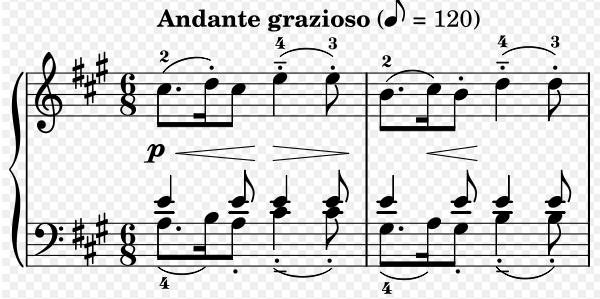
d. Duration –
Length of notes or silences

John Cage -
4'33"
|
About Silence
MELODY
Melody is the part of music you sing. It's a succession of
notes. Here is an example from
Twinkle Twinkle Little Star:
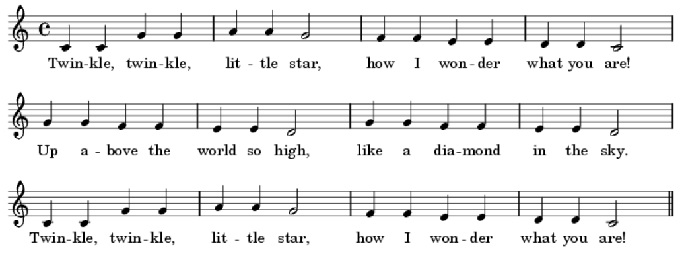
HARMONY
Harmony is 2 or more notes played together.
When 2 notes are played together, it's called an interval.
Three or
more notes played together is called a chord.
Consonant intervals, or chords, have a pleasing sound. Dissonant
intervals, or chords, have an unpleasing sound.
TEXTURE &
SONORITY
Large intervals are referred to as having an open or thin texture. Smaller
intervals have a closed, tight, or thick texture.
a. Monophony
is a single melody.
This is not to be confused with monophonic
instruments where only one note can be played at a time.
b. Polyphony
is two or more melodies - counterpoint.
This is
not to be confused with polyphonic
instruments where two or more notes can be played at the
same time.
c.
Homophonic
occurs when chords accompany one
melody.
TONALITY
The
C ajor Scale
has all white keys from C to C.
The A
Minor Scale has of all white keys from A to A.
The
Pentatonic Scale
(Penta is
Greek for five) uses only the five black notes of a keyboard
per octave.
OTHER
CONCEPTS
CONTRAST

JS
Bach -
2 Part Invention #8 in F Major
played on harpsichord.
Every musical contrast in contained in the above
two measures. In the first measure notes are
played against silence. In the second measure
the notes in the right hand (top) are getting
lower in pitch while the left hand plays notes
that are getting higher in pitch. The notes in
the right hand are played twice as fast. Also
the right is played legato (connected) while the
left hand is played staccato (detached) - like
the difference between walking and skipping.
POP SONG STRUCTURE
Intro:
The introduction builds anticipation to the main
theme. It may be similar or not.
Verse:
When two or more sections have basically the
same music but different lyrics (words), each section is
a verse.
Chorus:
The same music and lyrics are repeated in the
chorus. It contains the hook or main theme.
Hook:
It’s the main theme, stands out, is catchy, and
easy to remember. The hook is usually in the
chorus. The title is often contained in the
lyrics of the hook.
Bridge (Release, Middle 8):
The bridge, also called release or middle 8, is
a different melody.
Solo:
The solo showcases the technical ability of an
instrumentalist. It’s often improvised.
Licks and Riffs:
During a solo licks are short repeated melodic
lines. Riffs are short repeated rhythmic, bass,
or harmonic (chord) phrases.
Identify the Structure:
Lady Gaga -
Bad Romance
Pharrell Williams -
Happy
Bobby McFerrin -
Don't Worry Be Happy
Bruno Mars -
The Lazy Song |
Just The Way You Are
James
Morrison -
I Won't Let You Go
John Legend -
Who Did That To You
Sean Kingston -
Beautiful Girls
Maroon 5 -
Moves Like Jagger |
Sugar
Black Eyed Peas -
Pump It |
Boom Boom Pow
Charlotte & Jonathan
- Britain's Got Talent
Andrea Bocelli was the first
to perform
Con te Partiro. The music was
written by Francesco Sartori, and the lyrics are by Lucio
Quarantotto.
Pavarotti -
Nessun Dorma
"O
Sole Mio"
The Three Tenors: The Spanish Tenor Plácido Domingo, the Spanish / Mexican Tenor José Carreras,
and the Italian Tenor Luciano Pavarotti.
GRAND
OPERA
(serious, tragic, heroic,
elaborate
mise-en-scčne)
The mise-en-scčne in opera refers to everything that appears
on the stage: sets, props, singers, costumes, and lighting.
The mise-en-scčne in opera is usually elaborate -
especially in grand opera.
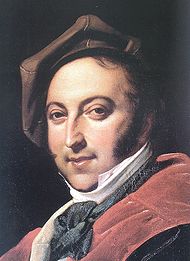
Rossini - Wilhelm Tell
Guillaume Tell (Wilhelm Tell) by Gioachino Rossini is an
example of grand opera. It was Rossini last opera although
he lived forty years longer. The work glorifies revolution
and civil disobedience. For this reason it was censored in
Italy. Performances have been given in both French and
Italian.
OPERA
COMIQUE
(contains spoken dialogue)
Opéra
comique is a French genre of opera. It contains spoken
dialogue, and recitatives (sung dialogue). It is, despite
its name, not necessarily comic or light in nature. Bizet's Carmen,
likely the most famous opéra comique, is a tragedy. It's
sometimes confused with the Italian opera buffa (opéra
bouffon) Carmen started as opera comique, and was later
made into grand opera.
CARMEN
Maria Ewing plays
Carmen, and Barry
McCauley is Don Jose. The London
Philharmonic is conducted by
Bernard Haitink.
Characters
Carmen: she works at a cigarette factory. Controversy: first
time a woman was portrayed smoking. She has no morals.
Don Jose: A soldier, falls in love with Carmen, and goes
awal (Absent Without Authorized Leave). In the end he kills
her at the bull ring.
Escomillo: A brave heroic bullfighter. Carmen leaves Don Jose for him.
Oedipus Rex Ozawa
|
2 |- Julie
Taymor Director
Oedipus Rex at Sito Kinen Festival in Matsumoto (1992 by
Igor Stravinsky).
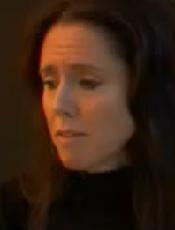
Julie Taymor (1952 - ) is a
polymath: a director, actress, set
designer, costume designer, and puppeteer. She has two Tony
Awards, the Drama Desk Award for Outstanding Costume Design,
an Emmy Award, and an Academy Award nomination for Original
Song.
OPERA
BUFFA (comical)
Final scene of Don Giovanni from Amadeus
Mozart
entered the work into his catalogue as an "opera
buffa" although the opera blends comedy, melodrama, and
supernatural elements. Dramma giocoso is a term that denotes
a mixing of serious and comic action.
OPERETTA

Jacques
Offenbach (1819–1880)
Offenbach was a composer and cellist of
the Romantic era. He was one of the originators of the operetta
form. Operetta is light hearted opera.
ORPHEUS IN THE UNDERWORLD
MUSIC
APPRECIATION
Radiolab:
What is music? How does it work?
Musical Language
Hear EMI's compositions
Pop
Music
Why do some songs mercilessly stick in
our heads?
...................
Great Pianists Of The 20Th Century
.....................
Johnny Cash Hurt
Listen to Hurt – one of the best things Cash ever
did. The search for perfection is uncreative,
inhuman, naive, and a contradiction to
artistry because artistry is human, and what
makes us human? It's our character, our quarks,
our individuality, our mortality, and even
our imperfections. We are not computers.
..................
Shadow On The Sun (Audioslave) "Collateral" Movie
Soundtrack
Terry Riley • In C Remixed •
CD Trailer
In
C is the first minimalist musical composition. It inspired
the music of Philip Glass, trance, techno, and scores of
others. It was first performed in 1967 by an ensemble from
the State University of New York at Buffalo.
It consists of 53 short numbered musical phrases - that are
played in order, but they are repeated any number of times.
Musician can play any phrase they want. A metronome like
pulse is created by one musician playing repeated octaves of
C. There is no set duration or number of musicians.
Sxip Shirey:
Pandora
|
TED |
Blood of the Blood
|
Bowls with Red Marbles
KEITH JARRETT:
Sun Bear Concerts Piano Solo Tokyo
Encores
Koln Concert
|
Paris Concert
):(
Esbjorn Svensson:
Seven Days Of Falling/Elevation of Love
Esbjorn Svensson Trio - Jazzwoche Burghausen Live
Fragile Live - with Pat Metheny and Michael Brecker
JILL SCOTT:
A Long Walk
|
Hate On Me
The Fact Is
KOMUSO - PRIEST OF
NOTHINGNESS:
Playing Shakuhachi Flute
MIYATA KOHACHIRO:
Honshirabe (Japanese Shakuhachi Flute with
Kimono patterns)
JOHN MAYER:
Daughters
|
Gravity
|
Belief
CARLOS SANTANA:
Oye Como Va
|
Smooth
Corazón Espinado
|
Woodstock 1969
John Lee Hooker:
The Healer HQ |
Chill Out
ART BLAKEY
Dat Dere
JEFF BECK:
|
Cause We've Ended as Lovers
Goodbye Pork Pie Hat
|
FUSION JAZZ
Dorian Cheah
Rasa Lila |
Santa Monica
Jean Luc Ponty
Cosmic Messenger |
Return To Forever:
Chick Corea, Al Di Meola, Stanley Clarke, Lenny
White
Mahavishnu Orchestra:
Lotus Feet Acoustic
|
Lotus Feet Electronic
Flamenco Guitar Barcelona
Beatbox
Guitarra: Justo Fernández
PNiccolo Paganini - Caprice XVI
Performed by Alexander Markov
Niccolo Paganini
-
Documentary
RAVEL
- IMPRESSIONISTIC MUSIC
Maurice Ravel (1875 – 1937) was a French composer and
pianist of Impressionist music. Ravel's piano compositions,
such as Jeux d'eau, Miroirs, and Gaspard de la Nuit, demand
considerable virtuosity from the performer.
Guitar Tapping |
also unknown
Raul Midon - State Of Mind @ Jools
Holland
Ornette Coleman
(1930 - ) is an American saxophonist, violinist,
trumpeter, and composer. He was one of the major innovators
of the free jazz movement of the 1960s.
His album Sound Grammar received the 2007 Pulitzer Prize for
music.
Dominic Miller-Adagio in G Minor-Albinoni
Goldberg Variation No. 1 - Adam Fulara
http://www.youtube.com/watch?QbZe45eicDE
Jaco Pastorius Solo
Bobby McFerrin -
Thinkin' About Your Body
Air by Bach
, Bobby Mcferrin
Bobby McFerrin
vocal with Ferenc Snétberger
guitar
Allan Holdsworth
Joe Satriani Live -
Flying In A Blue Dream

